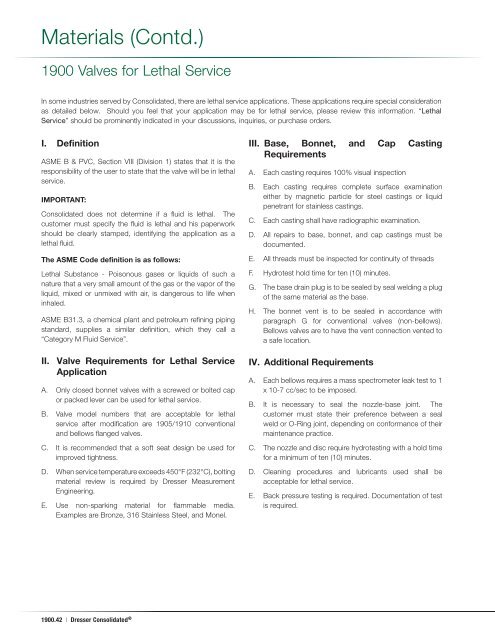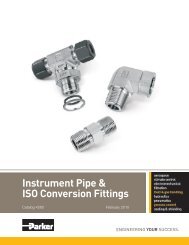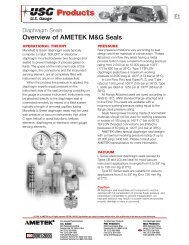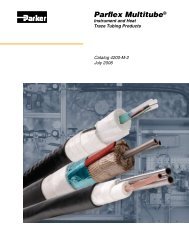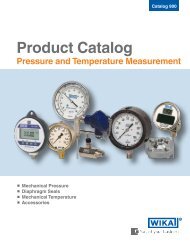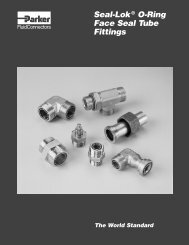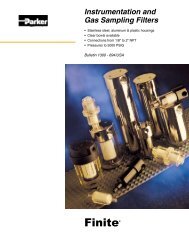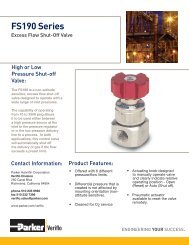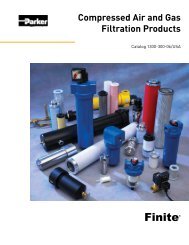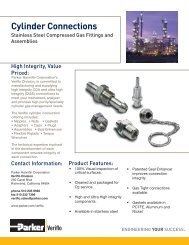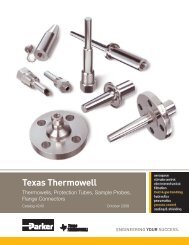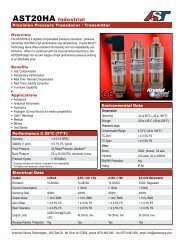Create successful ePaper yourself
Turn your PDF publications into a flip-book with our unique Google optimized e-Paper software.
Materials (Contd.)<strong>1900</strong> <strong>Valve</strong>s for Lethal ServiceIn some industries served by Consolidated, there are lethal service applications. These applications require special considerationas detailed below. Should you feel that your application may be for lethal service, please review this information. “LethalService” should be prominently indicated in your discussions, inquiries, or purchase orders.I. DefinitionASME B & PVC, Section VIII (Division 1) states that it is theresponsibility of the user to state that the valve will be in lethalservice.IMPORTANT:Consolidated does not determine if a fluid is lethal. Thecustomer must specify the fluid is lethal and his paperworkshould be clearly stamped, identifying the application as alethal fluid.The ASME Code definition is as follows:Lethal Substance - Poisonous gases or liquids of such anature that a very small amount of the gas or the vapor of theliquid, mixed or unmixed with air, is dangerous to life wheninhaled.ASME B31.3, a chemical plant and petroleum refining pipingstandard, supplies a similar definition, which they call a“Category M Fluid Service”.II. <strong>Valve</strong> Requirements for Lethal ServiceApplicationA. Only closed bonnet valves with a screwed or bolted capor packed lever can be used for lethal service.B. <strong>Valve</strong> model numbers that are acceptable for lethalservice after modification are 1905/1910 conventionaland bellows flanged valves.C. It is recommended that a soft seat design be used forimproved tightness.D. When service temperature exceeds 450°F (232°C), boltingmaterial review is required by Dresser MeasurementEngineering.E. Use non-sparking material for flammable media.Examples are Bronze, 316 Stainless Steel, and Monel.III. Base, Bonnet, and Cap CastingRequirementsA. Each casting requires 100% visual inspectionB. Each casting requires complete surface examinationeither by magnetic particle for steel castings or liquidpenetrant for stainless castings.C. Each casting shall have radiographic examination.D. All repairs to base, bonnet, and cap castings must bedocumented.E. All threads must be inspected for continuity of threadsF. Hydrotest hold time for ten (10) minutes.G. The base drain plug is to be sealed by seal welding a plugof the same material as the base.H. The bonnet vent is to be sealed in accordance withparagraph G for conventional valves (non-bellows).Bellows valves are to have the vent connection vented toa safe location.IV. Additional RequirementsA. Each bellows requires a mass spectrometer leak test to 1x 10-7 cc/sec to be imposed.B. It is necessary to seal the nozzle-base joint. Thecustomer must state their preference between a sealweld or O-Ring joint, depending on conformance of theirmaintenance practice.C. The nozzle and disc require hydrotesting with a hold timefor a minimum of ten (10) minutes.D. Cleaning procedures and lubricants used shall beacceptable for lethal service.E. Back pressure testing is required. Documentation of testis required.<strong>1900</strong>.42 | Dresser Consolidated ®


